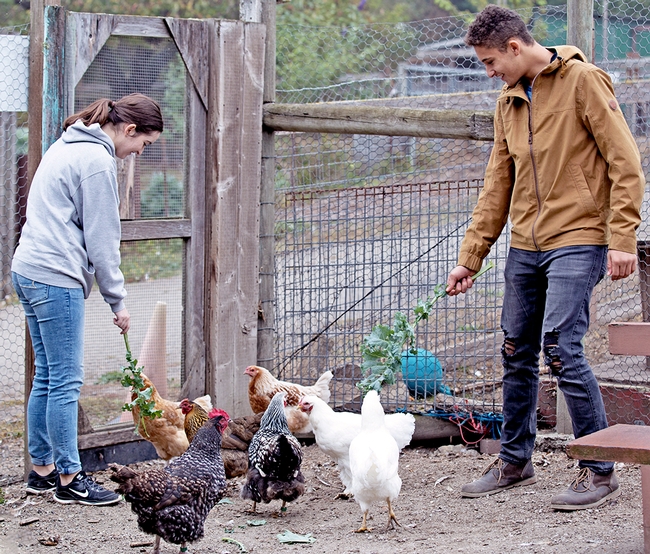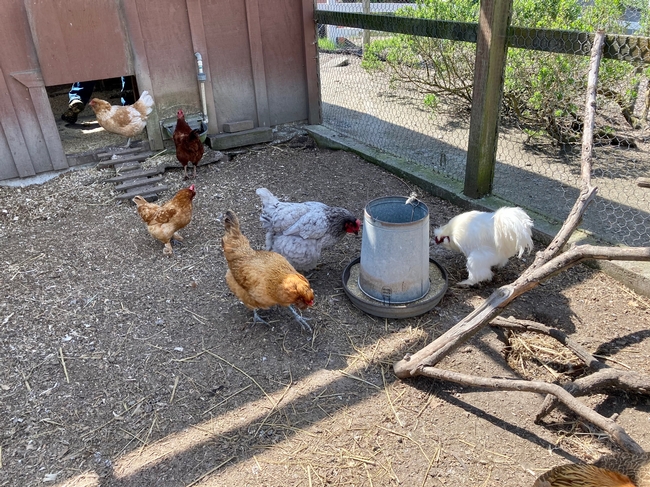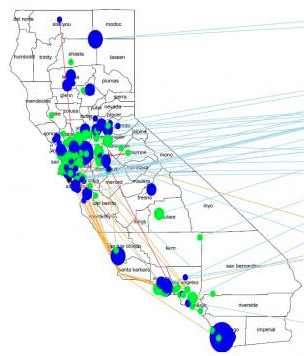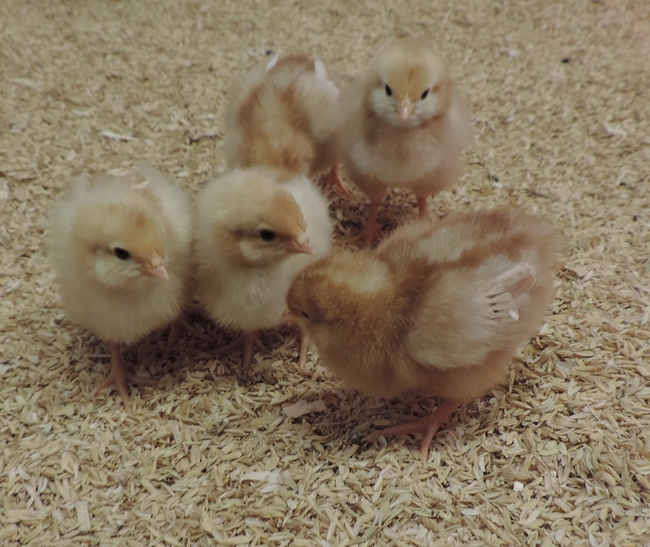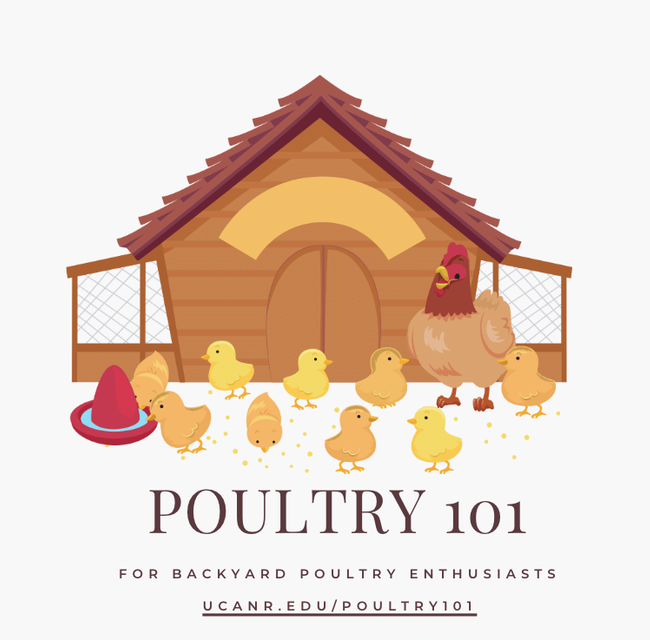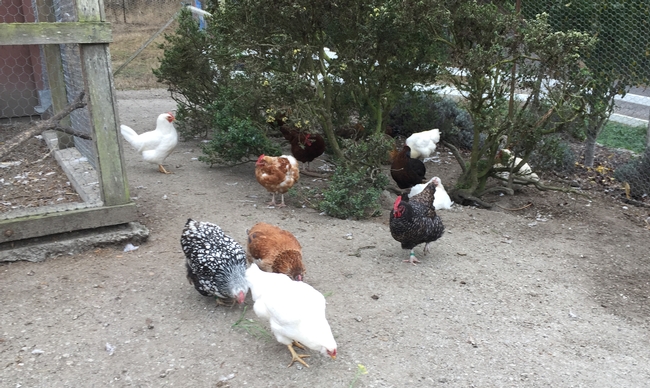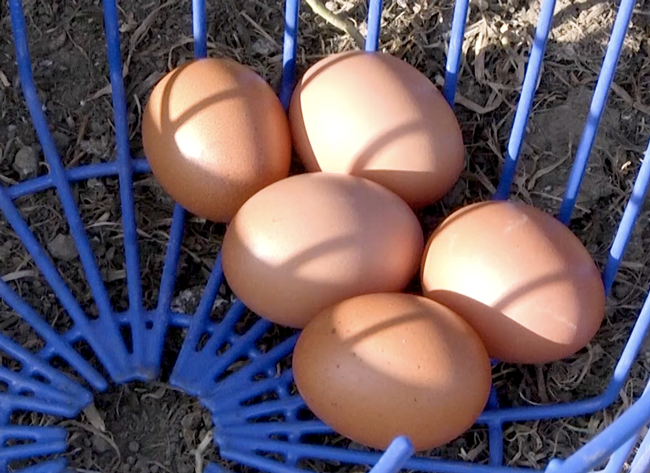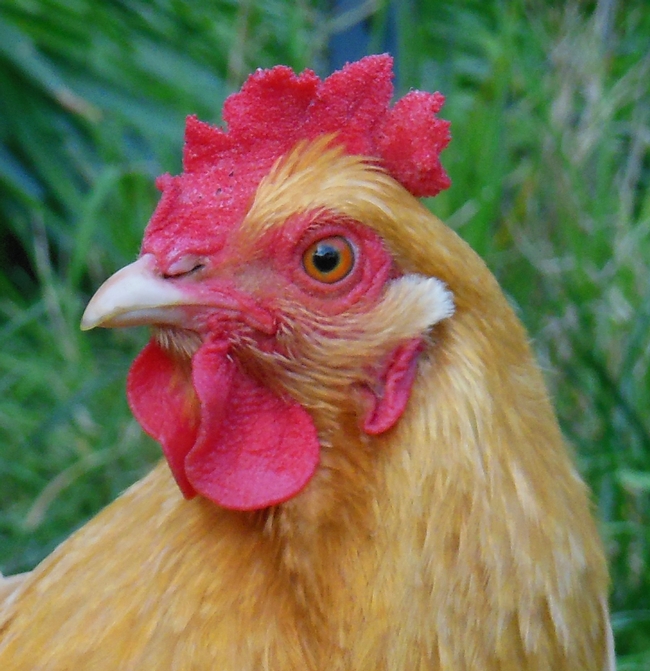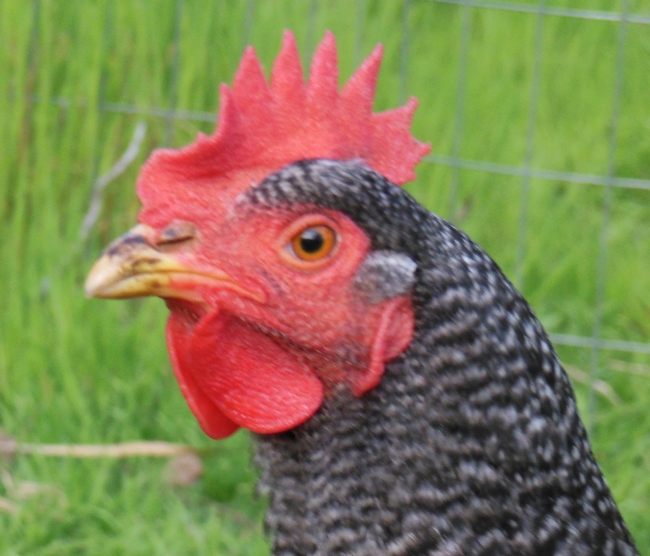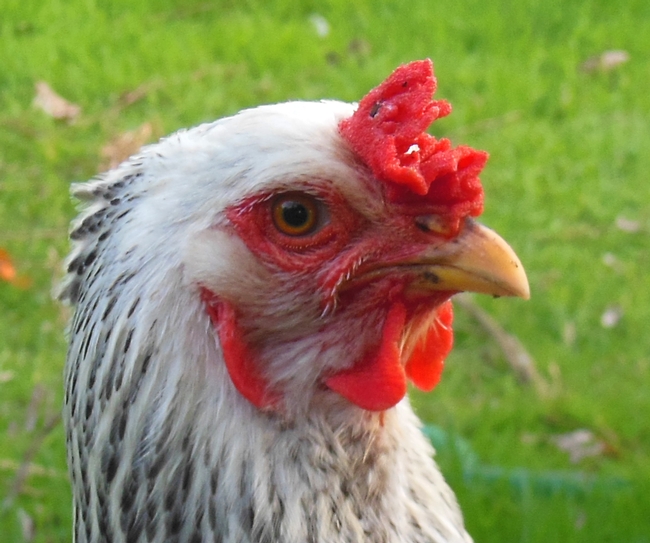Posts Tagged: Chickens
Bird owners urged to take precautions for avian flu
The highly contagious avian flu is being spread primarily by migratory birds, putting game birds, and backyard and commercial poultry at risk.
“Poultry owners should take precautions to prevent their birds from contacting waterfowl or the habitat that waterfowl frequent because this strain of avian influenza is highly contagious,” said Maurice Pitesky, UC Davis School of Veterinary Medicine associate professor of Cooperative Extension.
Infected waterfowl shed the highly pathogenic avian influenza virus in their feces and respiratory secretions, where the virus can remain viable for months in the environment.
“If you can't confine your birds in a coop, focus on good sanitation and reducing contact with waterfowl and their habitat such as agricultural fields and ponds,” he said.
Pitesky urges commercial and backyard chicken owners to monitor their birds for the following symptoms:
- Reduced egg production
- Trouble breathing
- Clear, runny discharge from nose, mouth and eyes
- Lethargy or lack of energy
- Loss of appetite
- Drinking less
- Swollen eyes, head, wattles or combs
- Discolored or bruised comb, wattles or legs
- Sudden death
To prevent exposure to potentially infected waterfowl, Pitesky suggests reassessing and redoubling biosecurity efforts to prevent contact between wild animals and domestic poultry.
Specifically, he recommends keeping birds away from ponds and other open water where they may contact waterfowl, which are the primary reservoir of the disease. To prevent cross-contamination, use clothing and boots that stay on your property and avoid sharing equipment with other bird owners.
A local veterinarian or UC Cooperative Extension farm advisor may have more suggestions to reduce risk.
For more information about protecting birds from avian influenza, visit https://ucanr.edu/sites/poultry/files/225352.pdf.
Unusual or suspicious sick or dead domestic birds should be reported to the California Department of Food and Agriculture Sick Bird Hotline at (866) 922-2473.
Suspicious wild bird deaths can be reported to California Department of Fish and Wildlife (CDFW) at https://wildlife.ca.gov/Conservation/Laboratories/Wildlife-Health/Monitoring/Mortality-Report.
Chicken owners invited to take survey guiding disease prevention
Californians who raise chickens and game fowl are invited to participate in a study to help the University of California more effectively deliver poultry health information and prevent the spread of diseases such as avian influenza.
Myrna Cadena, a Ph.D. student working with Maurice Pitesky, UC Cooperative Extension poultry specialist at UC Davis School of Veterinary Medicine, is leading a study with the Backyard Chickens and Game Fowl survey: https://bit.ly/3rWYpOa.
“Knowing how live birds are moved in California will be crucial in the event of a poultry disease outbreak,” Cadena said. “For example, if we know which counties have a large number of chickens coming in and out, then we can focus resources in those areas. The data collected could help us determine where to hold biosecurity workshops or distribute poultry vaccines.”
The survey takes 10 to 15 minutes to complete and includes questions about the flock; biosecurity practices; buying, selling and trading birds; and movement of birds for shows and fairs.
“We are university researchers, not a regulatory agency, so we are focused on outreach and education, not regulation and enforcement,” said Pitesky, who encourages owners of small-scale poultry operations to contribute to the research project.
To participate in this voluntary study about backyard chickens and game fowl in California, please fill out the survey at https://bit.ly/3rWYpOa by Sept. 30.
If you have any questions or comments, please contact the researchers at mepitesky@ucdavis.edu or mmcadena@ucdavis.edu.
Also, check out the video series, The Sitch, where Pitesky breaks down the basics of beginning a poultry farm and raising a backyard chicken flock: https://www.youtube.com/channel/UCP_1xWyE9U3JxjpsL9W-Crg.
Poultry 101 guides new parents of chicks
As Californians began sheltering in place at home, they started growing their own food. In addition to gardening, people have begun adopting chickens for fresh eggs. For people who have little to no experience raising poultry, University of California Cooperative Extension has care and feeding tips to keep the birds healthy.
UCCE dairy advisor Randi Black and Karen Giovannini, UCCE agriculture ombudsman for Sonoma County, collaborated with UCCE poultry specialist Maurice Pitesky in the School of Veterinary Medicine to create Poultry 101. Their tips for new poultry owners are free at http://ucanr.edu/poultry101.
“Raising chicks and hens can be incredibly rewarding, particularly with delicious farm fresh eggs made right in your backyard,” said Black, who is also proud backyard poultry parent. “However, like other animals, they take a lot of care and management to ensure they stay healthy and productive. With new poultry parents on the rise, providing informative and accessible resources is critical to keeping our backyard flocks thriving.”
The guide covers the needs of chickens over their lifespan, from the time they hatch through retirement.
For warmth, baby chicks huddle under their mother hen. Without a hen, new owners must provide the appropriate ambient temperature based on the age of the chick. Poultry 101's “Chick temperature chart” recommends temperatures for chicks from hatch to 6 weeks old.
At around 18 weeks of age, one can eggs-pect pullets to lay their first egg.
"Backyard poultry can be educational and fun. Using UCCE tools like 'Poultry 101' are meant to provide science-based practical resources to raise healthy poultry,” Pitesky said.
Got backyard chickens? Get their eggs tested for free
Californians who raise poultry outdoors are invited to get their eggs tested for contaminants.
To find out if harmful substances on the ground that are eaten by birds get passed along in the eggs they lay, Maurice Pitesky, UC Cooperative Extension poultry specialist at the UC Davis School of Veterinary Medicine, is providing free egg testing.
“We're trying to understand the connection between the environment that backyard poultry are raised in and the eggs they are producing,” Pitesky said.
Pitesky's colleague veterinary toxicologist Birgit Puschner is testing eggs for different types of contaminants, depending on the county the eggs are from.
Eggs from counties recently affected by wildfires will be tested for chemicals, building materials and heavy metals that may have been carried in the smoke and ash. Pitesky and Puschner are also looking for lead and PCBs in eggs from certain regions of the state.
The UC Cooperative Extension poultry specialist will share individual egg results with each poultry owner. At the end of the study, all of the results will be summarized and made available to the general public.
Pitesky describes the project in a video produced by CropMobster for UC Davis School of Veterinary Medicine and UC Agriculture and Natural Resources. Watch the video at https://youtu.be/3ZlytlUIS3I.
For more information about the study and how to package and ship eggs, visit http://ucanr.edu/eggtest.
Residents in Sonoma County may drop off eggs at the UC Cooperative Extension office at 133 Aviation Blvd Suite 109 in Santa Rosa. The UCCE office in Sonoma County is open Monday through Friday from 8 a.m. to noon and 1 p.m. to 4 p.m.
The case of the cannibal chicken
We love to watch our three hens. They roam contentedly now in our Sacramento backyard, eating bugs and greens. We've named them, of course: Blondie, Queenie, and big Lizzy. They are a little flock, raised together since they were day-old hatchlings from the feed store. They're about three years old now, and still laying two or three eggs between them most days, before we let them out of their covered run in the afternoons. Our next-door neighbor has built a coop too, and there's another little flock on the other side of the fence. Our girls even have neighbors to cackle with.
About six months ago we started seeing a problem - pecked eggs! When we went to gather our one, two or three eggs every day from the nesting box inside their run, which was open to the sky then, more often than not one of the eggs would have a pecked hole in it. Sometimes some of the egg inside would be clearly gone, eaten by something or someone. An Internet search told us that, yes, chickens can peck at their own eggs, and that usually this could not be cured once it started.
We suspected Blondie, as she was the ornery one, the one who pecked at our calves when we cleaned the coop. We even started planning the stew-pot for Blondie, and talked seriously about which of us was farmer enough to do the necessary deed, cleanly and humanely of course. But before we sharpened the knife, we asked for advice.
The feed store told us that egg-pecking could be from calcium deficiency and that we should always provide a bowl of oyster shells in the coop. So we did. They also sold us some wooden eggs to slip into the laying nest when we took the eggs, to fool the birds. We tried that, with no luck. A poultry farmer friend suggested blowing out an egg and then filling it with garlic and black pepper and putting it in the nest. We tried that. For a few weeks everything was fine, but then we came home to more pecked eggs.
In May, we rode our bikes around Davis for the Tour de Cluck, an annual tour of backyard chicken coops, mostly to seek advice from other chicken keepers about how to deal with our cannibal chicken. At Davis Central Park, we met Richard Blatchford, a post-doc with the UC Department of Animal Sciences, who had a poster about various poultry behavior problems, including egg-pecking. We talked, and his advice was similar: oyster shells, decoy eggs, gathering eggs early in the day, and, again, the news that this bad habit might spread to others in the flock and was hard to stop once it started.
Before we cut our little flock down to two, we wanted to make sure that we had the right culprit in the stew-pot. So we build a separate little covered and enclosed chicken run, complete with its own nesting box, to isolate one hen at a time. None of the girls pecked their own eggs when isolated in the covered little run, not even Blondie. But there were still pecked eggs in the larger open run with no cover. So Blondie was saved, but our mystery was not solved. Who was the culprit?
Finally, another chicken-keeper friend suggested a different villain - those chatty bluejays so often perched on the chicken wire fence of the chicken run. We spent a weekend covering the chicken run and resolved to keep the hens inside and the bluejays locked out until we had gathered the eggs. It worked; no more pecked eggs! Our problem was solved and we are so glad that our Blondie is not a cannibal.
UC Cooperative Extension provides resources for raising backyard chickens on the Foothill Farming website.
Researchers from the UC Davis Center for Animal Welfare have conducted a survey of urban chicken keepers about their resource needs, and will soon have available more information about the health and welfare of backyard poultry.


